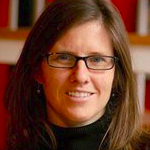According to recent international comparisons, the US is ranked 35th in math education and 29th in science education worldwide. This downward trend is not a new revelation. Over the past several decades we've seen the quality of public primary and secondary education decline continuously due in no small part to an overall lack of financial and societal support.
There is an alarming shortage of qualified teachers for science, technology, engineering, and math (STEM) education. And with recent rampant teacher layoffs, not surprisingly, unqualified teachers are being asked to teach these subjects. Roughly 30% of chemistry and physics teachers in public high schools did not major in these fields and have not earned a certificate to teach those subjects according to a new survey released by the National Center for Education Statistics (NCES). Tom Luce, CEO of the National Math and Science Initiative (NMSI) and a former assistant secretary at the U.S. Department of Education, said in a recent article on usnews.com, “the problem is most prevalent in middle school, where more than two-thirds of math teachers aren't qualified to teach the subject, a 2007 report by the National Academies shows. Only 1 in 10 middle school physical science teachers have a degree or certification in the subject, according to the same report.”
It's not only the formal education system that is failing us in this respect. Last week, my husband took my four-year-old son Connor to the The James S. McDonnell Space Hangar at the Udvar-Hazy Center in Virginia, where they saw the retired space shuttle Enterprise. Connor was in awe of the whole experience and asked, “Are astronauts the heroes of the world?” My immediate thought was, Astronauts were once the heroes of the world, as I reflected on the final space shuttle launch and realized that this young potential future engineer has just lost an enormous point of inspiration.
In hopes of resurrecting some inspiration for for our potential future American scientists, technologists, engineers and mathematicians, the nonprofit Carnegie Corporation of New York along with numerous other organizations have collaborated to form 100kin10, a coalition that will focus on three challenges of improving STEM education:
1. Increasing the supply of qualified teachers
2. Keeping those teachers in the classroom with incentive programs for top performers
3. Getting the public to realize that STEM education is an important issue
Carnegie's Talia Milgrom-Elcott says the coalition hopes to mimic the transparency and openness of the open source environment. Carnegie is not creating a new infrastructure or trying to train teachers on its own—it's merely connecting organizations that are already working on the problem. She wants these organizations to start sharing what works.
Many groups are jumping in to this collaborative. Changemakers, for one, is running a STEM education contest, and Google and ExxonMobil are among the companies sponsoring. The parameters are broad—entries are public, and anyone who has an idea of how to innovate STEM learning methods or improve teaching can enter.
My husband is a physics professor at Duke University. He and I frequently talk about the need to move away from the teacher-centered, passive-student pedagogy of the large lecture halls, which are by design not conducive to collaborative learning. Perhaps its a complete redesign of the classroom. That's a lot to ask, so my husband proposes possible tactics despite this learning environment to engage students better through team-based learning, collaboration, peer interaction and mentoring. Perhaps one day soon students can experience comfort and physical ease of communication within teams, but we can't wait for that day. That's something we'll propose to help STEM education.
What's your contribution?

Opensource.com
What to read next






16 Comments